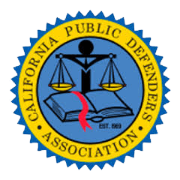
Table of Contents:
- Juvenile Justice: A Guide to Understanding Youth Justice Systems
- The History of Juvenile Justice: From Reformatories to Restorative Justice
- Components of the Juvenile Justice System
- Challenges and Controversies
- The Importance of Juvenile Justice Reform
- Conclusion
- FAQs about Juvenile Justice
Juvenile Justice: A Guide to Understanding Youth Justice Systems
Imagine a young person facing the legal system, often a daunting and confusing experience for anyone, let alone a minor. This is where Juvenile Justice comes in. It’s a specialized system designed to address the unique needs and circumstances of young people who’ve come into contact with the law. This system operates on the understanding that young people are different; they are still developing, and their brains haven’t fully matured, making rehabilitation a more central focus than in the adult criminal justice system.
Juvenile Justice recognizes the potential for change and growth in young individuals. This blog post will explore the world of Juvenile Justice, providing valuable insights into its history, its purpose, and some of the significant challenges it faces. Join us as we unlock the secrets of Juvenile Justice.
The History of Juvenile Justice: From Reformatories to Restorative Justice
The current Juvenile Justice system we have today differs greatly from the past. Before the late 19th century, children were often subject to the same legal processes and punishments as adults, often finding themselves incarcerated alongside hardened criminals. There was little regard for their young age or developmental stage, and they were often denied opportunities for rehabilitation.
However, the late 1800s marked a turning point with the emergence of the reformatory movement. This movement sought to establish separate institutions specifically designed for young offenders, shifting the focus from punishment to rehabilitation. Reformatories aimed to provide education, vocational training, and other rehabilitative services as an alternative to traditional adult prisons. The goal? To give young people the tools and support they needed to turn their lives around.
By the late 1960s, legislation in many countries introduced a new era of Juvenile Justice. One key aspect was the “care order,” which authorized youth courts to transfer parental rights to local authorities. While this measure was intended to protect some children, it also ignited debates about parental rights versus the state’s role in child welfare—a complex issue that continues to be debated today.
The Purpose of Juvenile Justice: Rehabilitation Over Retribution
The heart of Juvenile Justice lies in its emphasis on rehabilitation and restorative justice. This system is built on the belief that even when young people make mistakes, they deserve a chance to redeem themselves. Accountability is essential, but the primary goal is to guide them toward becoming productive members of society.
This means helping them understand the impact of their actions on others, teaching them valuable coping skills to deal with challenging situations, and equipping them with essential life skills to navigate adulthood responsibly. This approach recognizes that young people, even when they err, possess a remarkable capacity for growth and positive change, deserving of guidance and support.
Instead of simply punishing young offenders, the Juvenile Justice system strives to provide opportunities for them to learn from their experiences, make amends for their pasts, and ultimately transform their lives.
Components of the Juvenile Justice System
The Juvenile Justice system operates as a multifaceted network of various agencies and organizations. These entities work together, playing specific roles to address the multifaceted issue of youth crime effectively. Here are some of the crucial components of this complex system:
Juvenile Courts
At the heart of the Juvenile Justice system lie the specialized Juvenile Courts, specifically designed to handle legal matters involving minors. Unlike the often intimidating atmosphere of adult courts, Juvenile Courts prioritize the best interests of the child, offering a more compassionate and understanding environment.
These courts address a range of issues. This includes handling delinquency cases where minors are accused of violating the law, but their role extends beyond just determining guilt or innocence. They often take on an advocacy role, addressing matters related to child abuse, neglect, or dependency to ensure the safety and well-being of vulnerable youth.
Juvenile Courts represent a commitment to providing a fair and just legal process tailored to the developmental needs of young people. They strive to balance accountability with rehabilitation, offering a path for youth to understand and address their actions constructively. The ultimate aim is to help them transition into law-abiding and responsible members of society.
Probation and Community-Based Services
In Juvenile Justice, probation represents a structured opportunity for rehabilitation and growth within the community. It emphasizes second chances, not confinement. Instead of being sent to a correctional facility, young people on probation remain in their communities while receiving guidance, support, and monitoring from probation officers.
They participate in regular check-ins to assess their progress, address any challenges, and ensure they meet the terms of their probation. A crucial aspect of probation involves connecting youth with vital community-based services. These services act as pillars of support, providing resources tailored to their specific needs, which can vary greatly.
This can range from educational assistance to help them succeed in school, job training programs to enhance their employability, mental health counseling to equip them with coping mechanisms, and substance abuse treatment when necessary to address addiction issues. By offering a holistic support system, community-based services aim to empower young people to break free from cycles of delinquent behavior and thrive in their communities.
Detention Centers and Correctional Facilities
Within the Juvenile Justice system, detention centers serve a distinct purpose from adult jails. These centers primarily function as temporary holding facilities for youth awaiting court proceedings, ensuring their presence at scheduled hearings and addressing immediate safety concerns.
However, for offenses deemed serious or if community-based interventions prove inadequate, a judge may deem placement in a Juvenile Justice correctional facility necessary. These facilities prioritize rehabilitation and positive development rather than punishment.
They offer structured environments where young people participate in educational programs, vocational training, counseling sessions, and therapeutic interventions to address the underlying causes of their delinquent behavior. The ultimate goal? To equip residents with the skills and resources to facilitate successful reintegration into society. This commitment to rehabilitation sets Juvenile Justice correctional facilities apart from the often-punitive nature of adult prisons.
Juvenile Justice Data Collection and Analysis: The NCJJ
To address challenges effectively and craft meaningful reforms, a deep understanding of trends and patterns within the Juvenile Justice system is crucial. The National Center for Juvenile Justice (NCJJ), established in Pittsburgh in the 1920s, plays a vital role in this domain. The NCJJ houses the National Juvenile Court Data Archive, an extensive repository that transcends mere statistics.
It provides a historical record of how our country has handled youth crime, offering a comprehensive view of past practices and outcomes. This archive is an invaluable resource for researchers, policymakers, and advocates working to improve the Juvenile Justice system.
Through rigorous data collection and analysis, the NCJJ identifies patterns and disparities, shedding light on areas where intervention and reform are most needed. Their research findings provide evidence-based insights to guide policy decisions and improve outcomes for young people involved in the justice system.
Challenges and Controversies
While striving to uphold principles of fairness, rehabilitation, and restorative justice, the Juvenile Justice system is not without flaws. Over the years, it has faced criticism and controversy for systemic issues and biases that undermine its intended goals. Addressing these challenges is essential to building a more equitable and just system for all youth.
Racial Disparities in Juvenile Justice
One of the most pressing concerns within Juvenile Justice is the persistent issue of racial disparities. Data consistently reveal that minority youth, particularly Black and Brown youth, are disproportionately represented at every stage of the system, from initial contact with law enforcement to arrest, detention, and even sentencing. This overrepresentation raises serious concerns about systemic racism and implicit biases that permeate decision-making processes.
These disparities persist despite research suggesting that youth of color are no more likely to engage in delinquent behavior than their white peers. This overrepresentation points to deeper societal issues that require examination and action.
Factors such as poverty, lack of access to resources, and implicit bias in policing and court practices all contribute to these inequities. Addressing racial disparities within the Juvenile Justice system is not just about achieving numerical equality. It’s about dismantling discriminatory practices and creating a system where justice is administered fairly, regardless of a young person’s race or ethnicity.
Zero-Tolerance Policies and the School-to-Prison Pipeline
Another major area of controversy revolves around the use of zero-tolerance policies, particularly within educational settings. These policies, originally intended to deter violence and maintain order in schools, have come under fire for their unintended consequences, particularly their role in fueling the school-to-prison pipeline. This refers to the pattern of pushing students, particularly students of color and those with disabilities, out of school and into the criminal justice system for relatively minor infractions.
Critics argue that these policies are often overly rigid and fail to consider the context of students’ actions. This results in harsh punishments, including suspensions, expulsions, and even referrals to law enforcement, for infractions that could be addressed through more restorative and developmentally appropriate means.
The consequences of being entangled in the justice system at a young age can be severe. They may face long-term academic setbacks, limited employment prospects, and an increased risk of future involvement with the criminal justice system. Reforming these policies to focus on prevention, support, and addressing root causes rather than resorting to exclusionary discipline practices is essential.
The Importance of Juvenile Justice Reform
As we move forward, prioritizing Juvenile Justice reform remains critical. This involves moving beyond merely acknowledging the flaws in the system to implementing concrete actions to create a system that truly embodies justice, fairness, and rehabilitation for all youth.
It necessitates a multi-pronged approach, one that acknowledges and addresses the systemic issues within the system, while advocating for a more humane and rehabilitative approach to youth crime.
Reform efforts should prioritize evidence-based practices and policies proven effective in reducing recidivism and promoting positive youth development. Collaboration among stakeholders, including policymakers, practitioners, researchers, community organizations, and youth themselves, is key to developing comprehensive and sustainable solutions. This collaborative approach will pave the way for a Juvenile Justice system that is both effective and just.
Conclusion
The Juvenile Justice system is far from perfect, but its foundation is built upon the belief that young people have the capacity to change. It’s a complex web of courts, probation officers, community programs, and detention facilities, all with the shared goal of steering youth away from crime. Understanding this system, from its history to the challenges it faces, is crucial for anyone who cares about the well-being of young people.
Let’s champion reform efforts that emphasize rehabilitation, equity, and the voices of the youth themselves. It’s an investment in a future where all young people have a fair chance at a bright and fulfilling life, regardless of their past mistakes.




